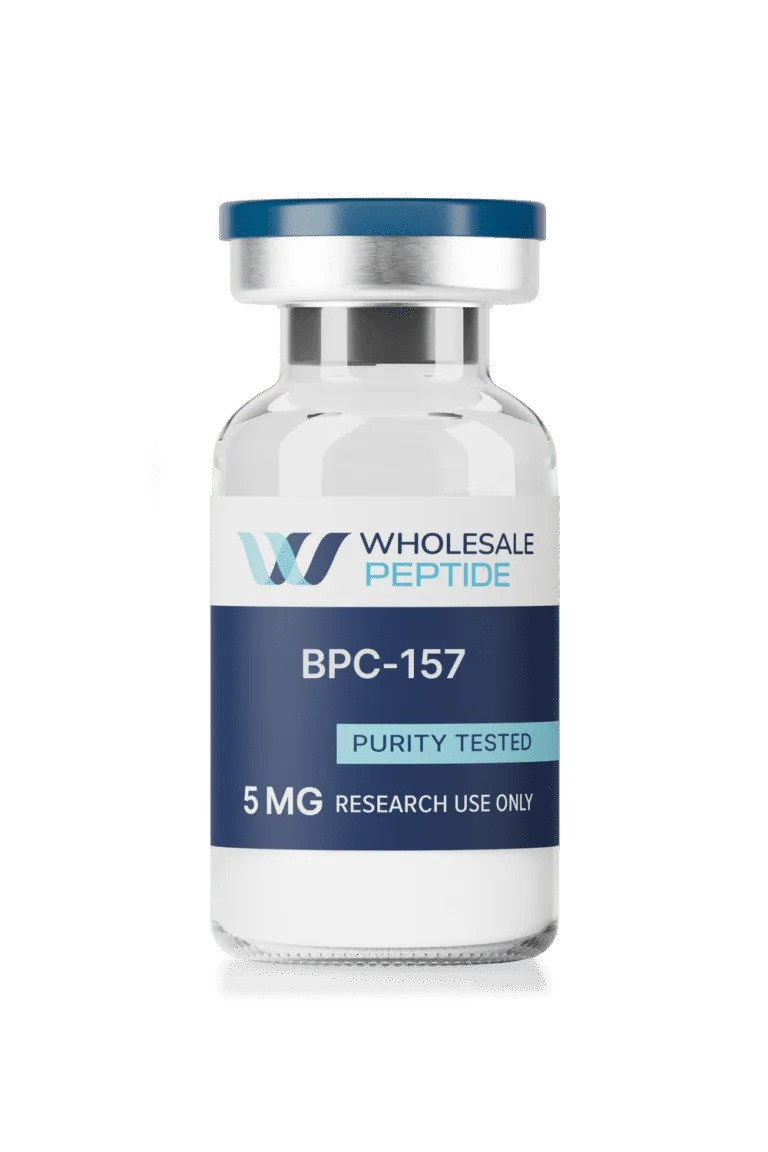Tirzepatide, Retatrutide, and Glutathione: A Research Overview
Brooksville, United States - November 14, 2025 / Wholesale Peptide /
Peptides are concise sequences of amino acids that function as signaling molecules, playing a pivotal role in various biochemical pathways. Investigations into these compounds have concentrated on their ability to modulate metabolism, facilitate tissue repair, and regulate redox processes. Notable compounds in these domains include tirzepatide, retatrutide, and glutathione, along with other peptides explored for their structural or regenerative capabilities. A thorough understanding of their mechanisms, formulations, and research considerations is essential for conducting controlled experimental studies.
Tirzepatide and Receptor Agonism
Tirzepatide operates as a dual receptor agonist that specifically targets glucose-dependent insulinotropic polypeptide (GIP) and glucagon-like peptide-1 (GLP-1) receptors. This unique combination influences metabolic signaling by modulating pathways related to glucose management, lipid metabolism, and gastrointestinal motility. The molecule exhibits a greater affinity for GIP receptors and demonstrates biased signaling at GLP-1 receptors, leading to distinct metabolic and gastrointestinal outcomes.
There are two FDA-approved products that include tirzepatide: Mounjaro, which is indicated for type 2 diabetes research, and Zepbound, which is indicated for metabolic regulation and body weight research. Both formulations utilize subcutaneous pen administration. The primary difference between them lies in their labeled research indications rather than their molecular mechanisms, offering diverse frameworks for experimental exploration.
Retatrutide and Multireceptor Modulation
Retatrutide is a triple-receptor peptide that targets GIP, GLP-1, and glucagon receptors. Its design aims to broaden the spectrum of metabolic signaling modulation. Phase II studies have demonstrated significant reductions in weight metrics under controlled research conditions, with average reductions surpassing those seen with dual-agonist peptides. Research interest is directed toward understanding how receptor distribution impacts lipid metabolism, energy balance, and hepatic signaling. The compound is currently undergoing advanced clinical evaluation, with its regulatory status pending further data.
Glutathione: Antioxidant Signaling
Glutathione is a tripeptide consisting of glutamine, cysteine, and glycine, and it plays a crucial role as an intracellular antioxidant. It is involved in redox regulation, detoxification processes, and the maintenance of cellular thiol levels. Experimental applications often focus on the restoration or modulation of redox balance.
Oral supplementation of glutathione encounters absorption challenges. Reduced glutathione has limited oral bioavailability, whereas S-acetyl-L-glutathione offers enhanced stability and cellular transport. Liposomal glutathione, which is encapsulated in lipid vesicles, achieves elevated plasma concentrations. The choice of formulation for research is influenced by factors such as stability, bioavailability, and the capacity to modulate systemic or tissue levels of glutathione.
Additional Peptides for Structural and Regenerative Research
In addition to metabolic peptides, research is expanding into compounds that may influence tissue structure, repair, or protein synthesis. BPC-157, a synthetic fragment of a gastric protein, has been studied for its effects on angiogenic pathways, local inflammatory signaling, and mechanisms of tissue repair. Most of the existing evidence is preclinical, and controlled experimental data remain limited.
CJC-1295 and Ipamorelin are analogs that target growth hormone-related receptor systems. Their combined application in research stimulates the pulsatile release of endogenous hormones, affecting downstream signaling such as insulin-like growth factor pathways and protein synthesis. Collagen peptides, which are hydrolyzed fragments of structural proteins, are being investigated for their impact on connective tissue signaling and matrix composition. Key parameters in these studies include absorption and distribution characteristics.
Research Integrity, Monitoring, and Costs
Peptide studies involve quantifiable biochemical and physiological parameters. Notable observed effects include the modulation of glucose and lipid pathways, markers of tissue repair, and antioxidant capacity. Experimental risks may encompass gastrointestinal reactions, local effects at administration sites, and alterations in biochemical profiles that necessitate careful monitoring.
The costs associated with peptide research can vary significantly. Branded receptor agonists typically incur the highest expenses, followed by compounded peptides that require customization or analytical assessments. Oral peptide formulations are generally less costly, although the complexity of the formulation and verification standards can affect overall costs. Laboratory evaluations and monitoring also contribute to the total financial investment in the study.
Regulatory Oversight and Sourcing
Reliable research necessitates a careful distinction among FDA-approved products, investigational agents, compounded peptides, and dietary supplements. Each category carries distinct regulatory implications that affect quality, traceability, and consistency in experimental outcomes. Verification steps include confirming regulatory status, evaluating manufacturer quality control practices, and reviewing analytical testing reports. Controlled studies should be conducted under professional supervision with clearly defined monitoring protocols.
Utilizing unregulated or low-quality peptides introduces variability in terms of purity, concentration, and biochemical activity. Contamination or improper preparation can jeopardize study results. Choosing well-characterized compounds with documented verification helps mitigate experimental uncertainty and bolsters data integrity.
Conclusion
Research on peptides encompasses metabolic, regenerative, and antioxidant fields. Tirzepatide exemplifies dual receptor modulation, while retatrutide offers opportunities for multi-receptor signaling. Glutathione continues to be a leading model antioxidant for experimental studies, with a focus on formulation and systemic delivery. Other peptides such as BPC-157, CJC-1295, Ipamorelin, and collagen fragments are under investigation for their roles in tissue signaling and structural modulation. Successful research depends on stringent sourcing, analytical verification, professional oversight, and adherence to regulatory standards, ensuring reproducible and scientifically sound outcomes.

Contact Information:
Wholesale Peptide
1204 S Broad St #336
Brooksville, FL 34601
United States
Julie Carter
+1888-348-8577
https://wholesalepeptide.com
